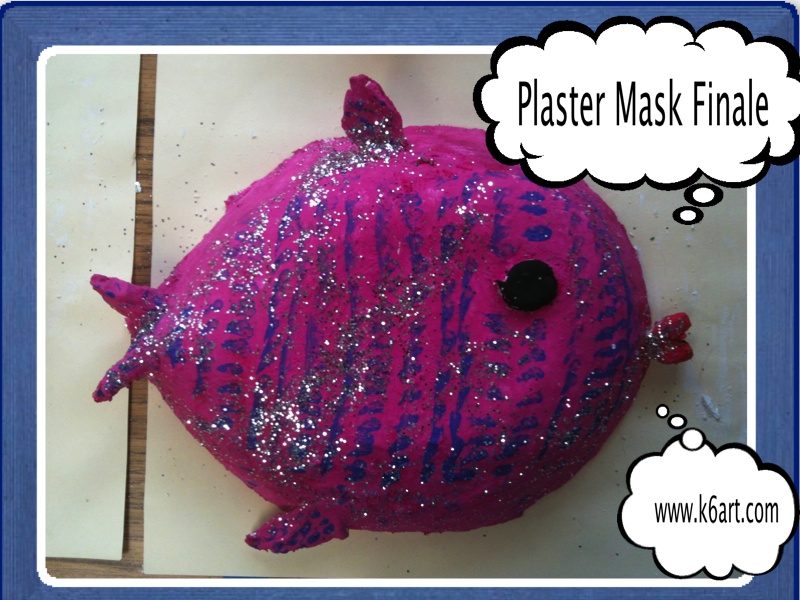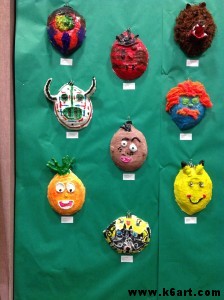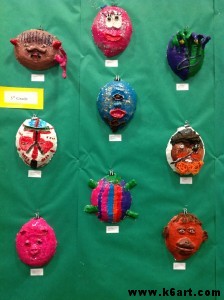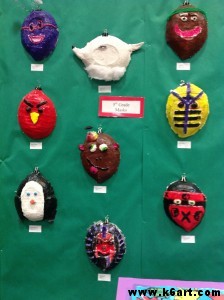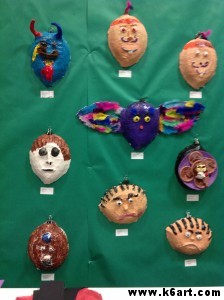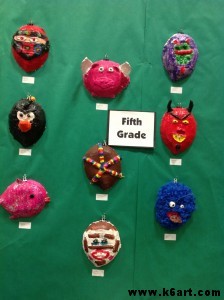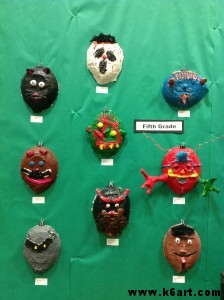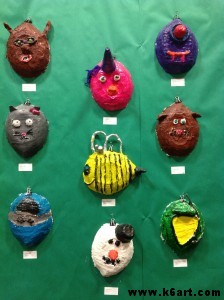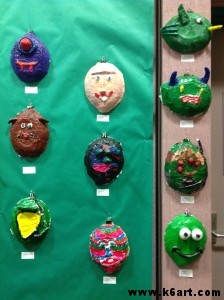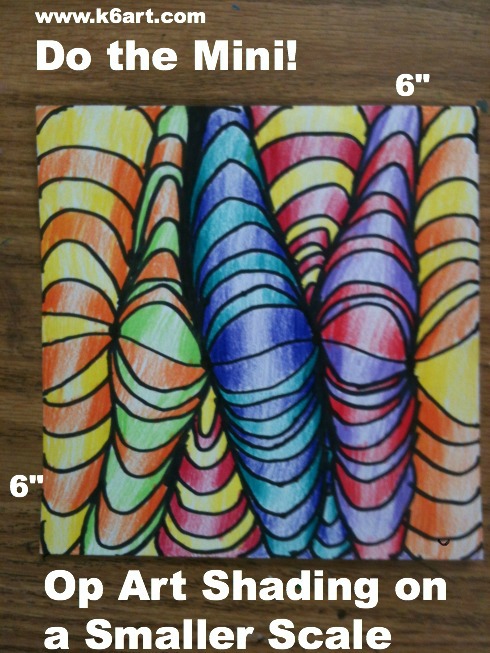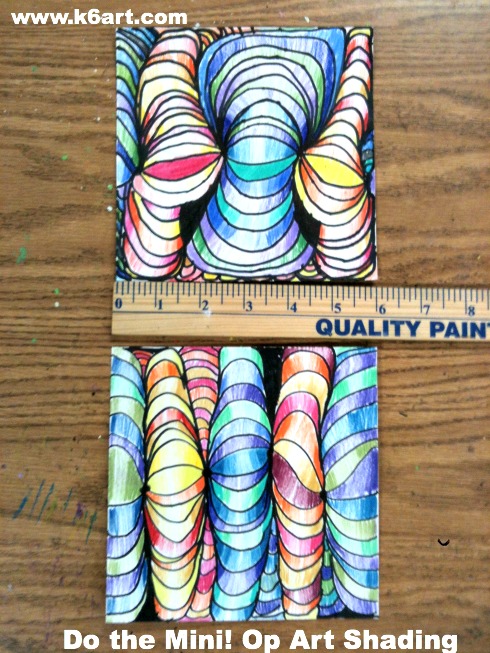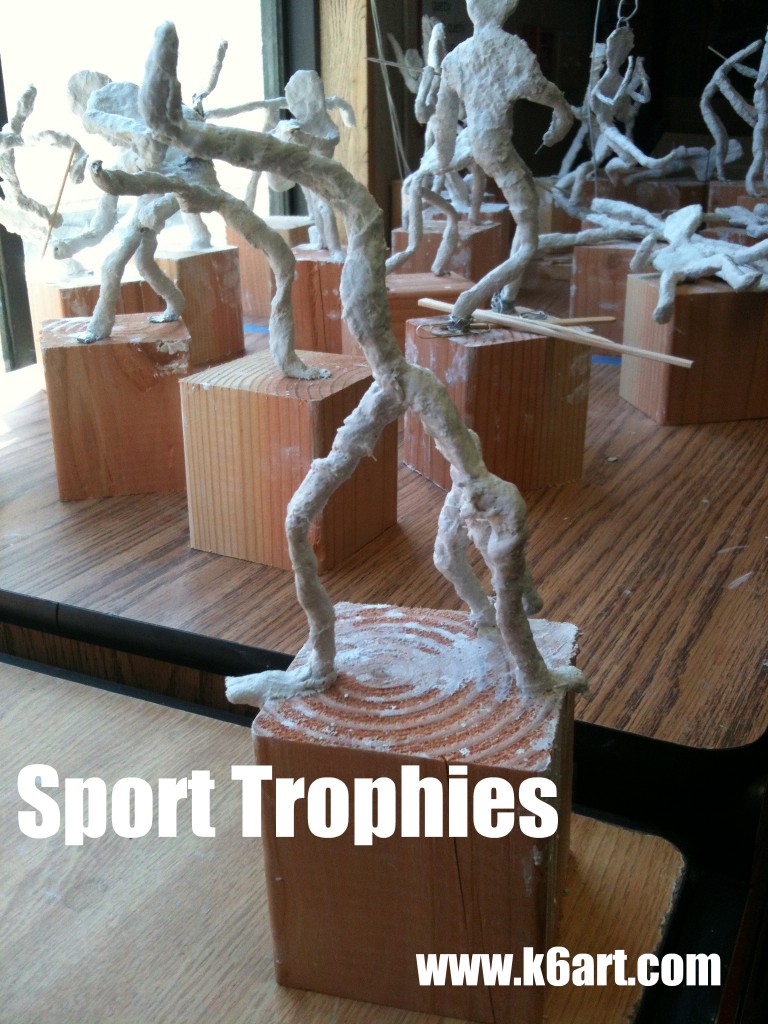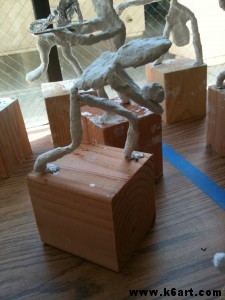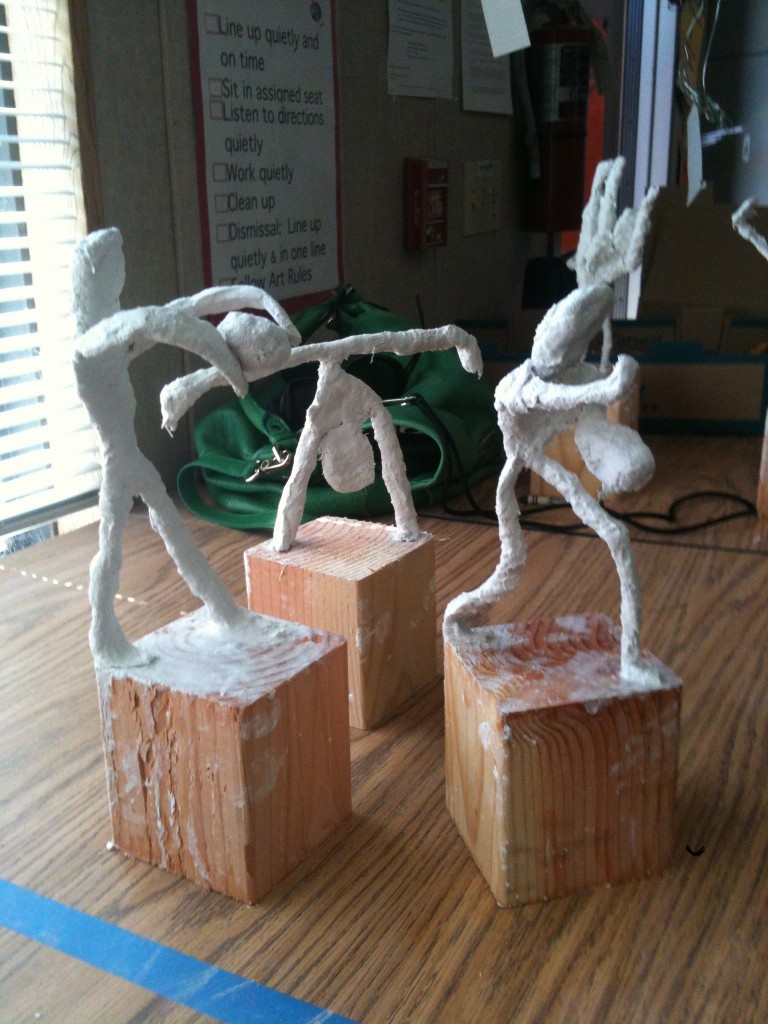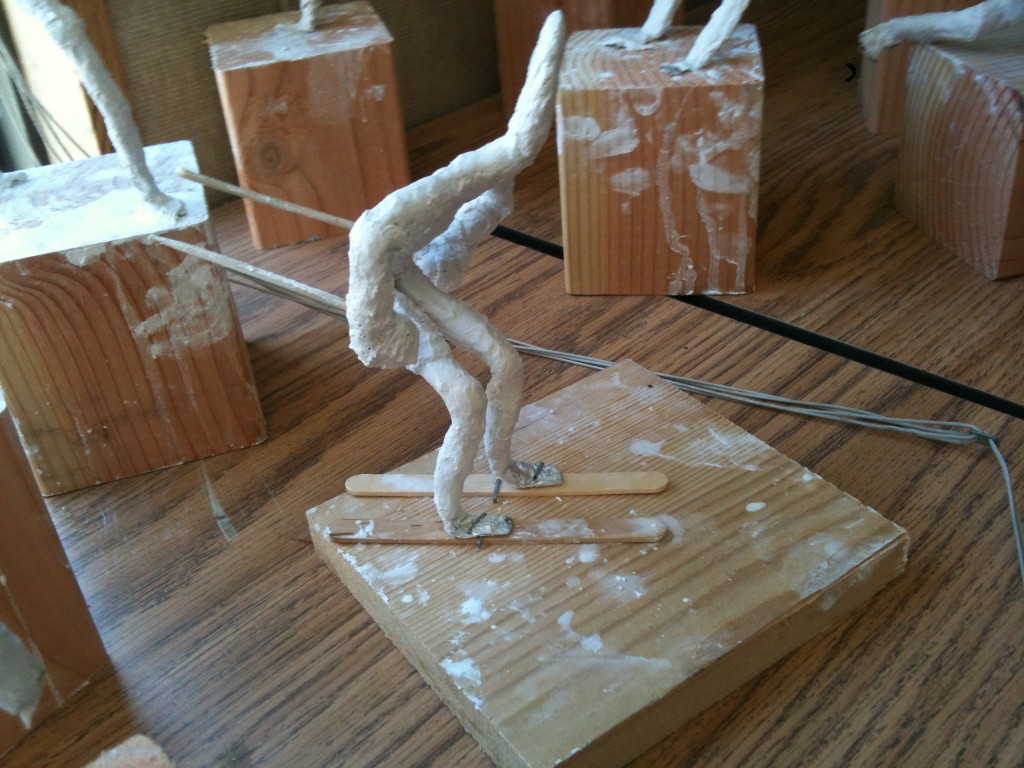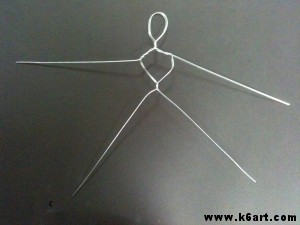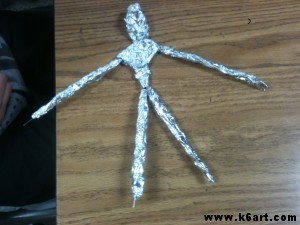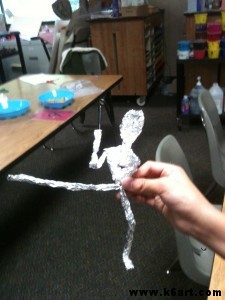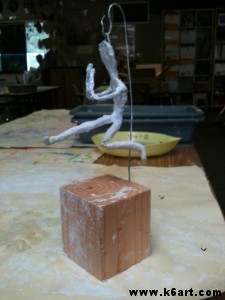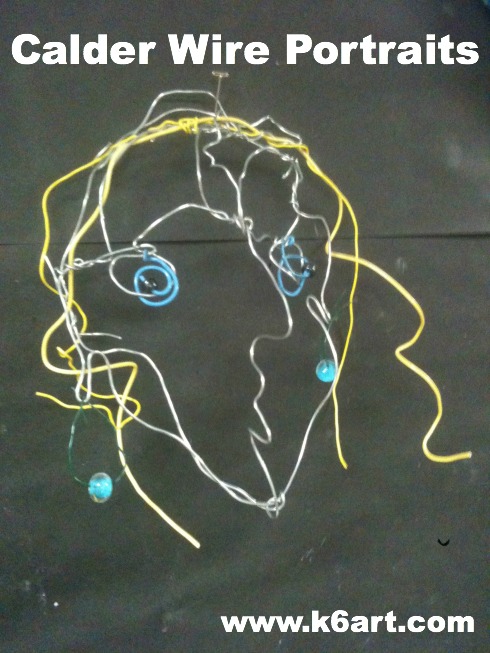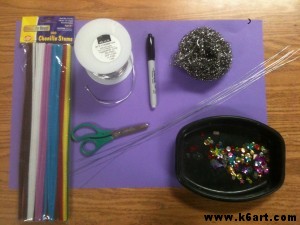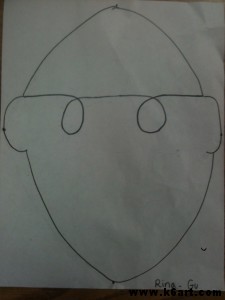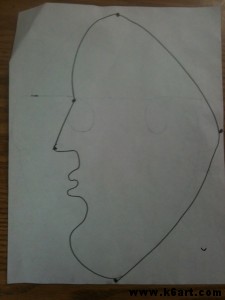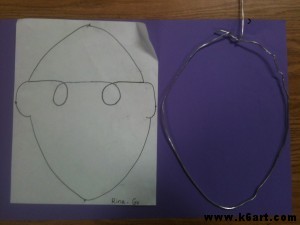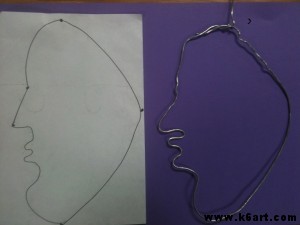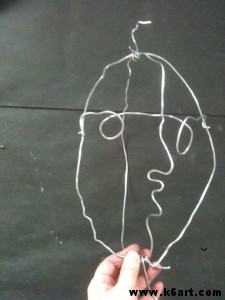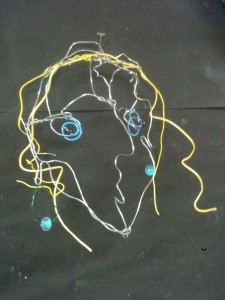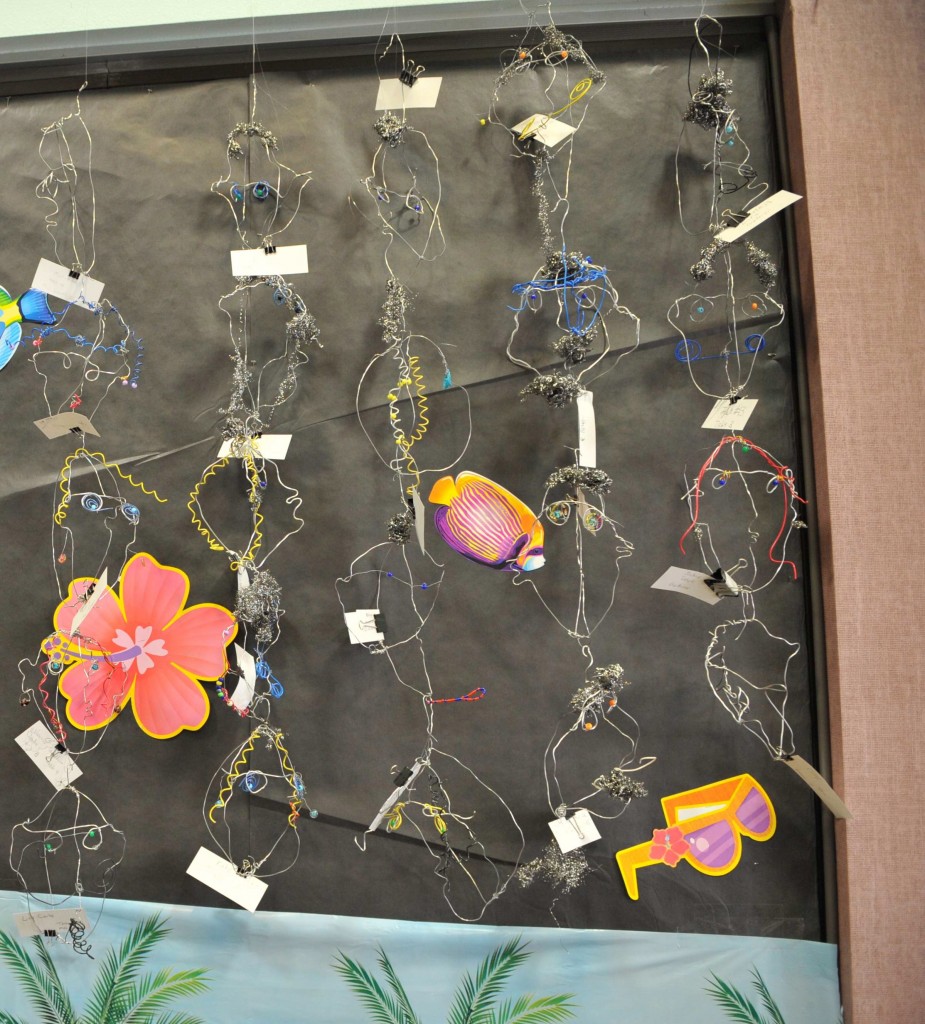Category Archives: 6th grade
Plaster Mask Finale 2012
Do the Mini! Op-Art Line Shading Lesson on a Smaller Scale
This Bridget Riley-inspired colored pencil op-art line shading lesson is extremely popular. I first saw it on Art With Mr. E., then on Teach Kids Art, and finally a post on Artisan Des Arts with a teaching video (wow!). If you are unfamiliar with this project please start out by visiting these excellent blog posts.
My small contribution to all this awesomeness is …small. Last year I tried this project with 5th grade using 9″x12″ white paper. Well, it took a long time…too long. The full size project took at least 4 classes and many students lost interest.
I decided to try a smaller format. At Mr. E’s suggestion I went down to a 6″x6″ square. SUCCESS! The 4th graders were able to complete the 6″x6″ project in 2-3 40-minute sessions. They were very proud of their artworks.
For detailed instructions, please view the teaching video in the link above. However, for the mini 6″ version of this project, start with 4 dots on the wavy line
Give it a try in any format.
More Bridget Riley op-art resources
Enjoy!
Sport Trophies for Fifth Grade: Update
This week the fifth graders continued work on their spectacular sport trophies. The wire and foil figures are now posed and wrapped with plaster wrap. Almost all have been stapled to wooden bases. Our fifth graders have experience working with plaster (see this post and this post) so almost all finished wrapping the figures during our 40 minute class.
Don’t you love the poses and accessories?
Here’s a ‘wrap up’ (get it?) of all the steps so far:
UPDATE: see the finished Olympic trophies in this post!
NOTE: I used three basic supplies for these sport sculptures:
- Plaster wrap
- Pre-cut floral wire (aka stem wire)
- Pre-cut aluminum foil
Pacon 52720 Plast’r Craft Plaster Impregnated Gauze Strips, 20 lbs.
18″ Pre-Cut Stem (Floral) wire 20 Gauge Bright Silver
(similar product available at Michaels and Wal-Mart craft department)
Pre-cut Aluminum Foil Popup Sheets
(similar product available at Costco and Smart & Final)
Calder Wire Portraits
Alexander Calder was an amazing, original, sculptor with a great sense of humor. Our 5th graders had a lot of fun making Calder-inspired wire portraits.
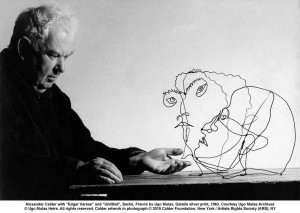
5th grade students made 3D wire portraits in the manner of Alexander Calder. Allow three 40-minute sessions.
Materials
- two 4 ft. pieces of wire (cut from spool of 14-gauge Blick Sculpture Wire) (note: compensated affiliate links)
- pre-cut floral wire, (AKA ‘stem wire’) in bright aluminum, 26-gauge for wiring on embellishments (I call this fine and flexible wire ‘sewing wire’ because it is fine enough to pass through a sequin)
- soft colored wires, such as Twisteez, pipe cleaners, or electrical wire (be sure it is easy to cut)
- embellishments: stainless steel pot scrubbers (can cut into smaller pieces, for beard), pony beads, sequins or buttons (for eyes and earrings)
- scissors
- copy paper or other thin paper
- Sharpie marker
- optional: gallon-size Ziploc storage bag if more than one session is required.
Day one:
Discuss Alexander Calder. I made a Calder wire portrait Powerpoint you may find helpful.
- Pass out paper and markers.
- Draw a front view of the face. Make a simple contour and touch all four sides of the paper.
- Turn paper over: the black lines from the first side should be visible!
- Now draw a simple profile of a face, including nose and lips. The profile should touch the top, bottom and one side of the paper.
Put sketch in labeled storage bag.
Day two:
Pass out bags, markers, and two 4 ft. lengths of 14-gauge Sculpture Wire per student. Students should turn sketch to the front view. Bend one wire around oval sketch. Overlap ends and wrap to secure.
Flip the sketch to the reverse. Place end of second wire at top of profile and bend wire to follow sketch. Overlap ends and wrap to secure. You may have excess wire – do not cut this off yet.
Put sketch + wires in labeled storage bag.
Day three:
Remove wire portrait pieces from bag and insert the front view through the profile. Secure at joints at top and bottom of face using pre-cut wire and any excess wire. Give students a short piece of wire for ‘glasses’. Add ‘C’ shaped wire ears if desired (or bend out ears from face wires).
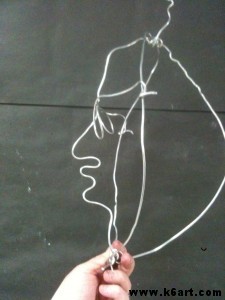
Side view of assembled wire portrait. Ready to embellish with pipe cleaners, beads, pot scrubbers and sequins.
Display:
Suspend from ceiling with string or fishing line, or link faces together with paper clip ‘S’ hooks for a giant mobile.
Helpful links:
Good all-purpose introductory video movie on Calder.
Here is a link to a past Calder portrait exhibition at the National Portrait Gallery.
The wire sculpture method for this project was inspired by the armature in this Dick Blick video lesson plan.
I absolutely LOVE Calder’s art, and I think your students will too. Check out my other Calder posts:
- Alexander Calder’s Jewelry
- Calder Wire Sculpture for 5th grade
- Calder Wire Sculpture Finale 2012
- Calder book to read online for free
- NEW!!!!!: How to make a Calder Mobile!!!
Good luck! If you try this project and post it online, please link back to this post. 🙂
Enjoy!
Do you have a favorite Calder project?
NOTE: POST UPDATED: 11/25/13

